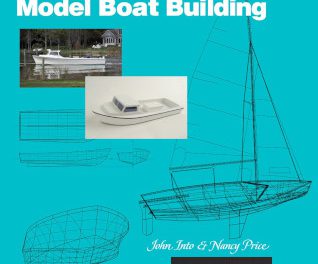
Windvanes hang like medals from the stern, a hallmark of many a long-range cruiser. While walking the docks, we see them hanging proudly on boats’sterns. We wonder about the stories the crew could tell of their adventures in the tropics while imaging ourselves on these dedicated cruising machines going to far off-destinations for adventure and excitement.
For a long voyage on a shoestring budget, the windvane is the device of choice, usually a used one. Those who are fitting out their boats find windvanes to be energy and fuel savers. There are many windvanes to choose from and, for those who would make their own, many engineering feats to consider. Author Bill Morris has tried to distill and lighten the stodgy world of windvane engineering and application without turning his book into a cure for insomnia. His book, The Windvane Self-Steering Handbook, is an attempt to tell you the history, construction, installation, and use of the device. He starts off with some history and basic engineering of the windvane before getting to the part that will interest most cruisers. Chapter Four is where it really begins, as he discusses considerations for matching the boat to the vane gear. Chapter Five discusses vane gear specifications for production vanes. Chapter Six is what I feel is the payoff. Here Bill discusses locating and evaluating used windvanes. This is worth the price of the book alone. Another topic I find missing in some discussions and articles about windvanes is installation . . . which just happens to be Chapter Seven.
There is also a chapter dedicated to maintenance and repair. It covers everything from inspecting the vane to bent tubing and broken welds and a helpful section on oxidized aluminum. The following chapter talks about customizing the vane gear. For the backyard builder, there is a chapter on building a horizontal vane trim tab system. There are chapters on emergency rudders and an appendix filled with information for further reading.
The chapter on sailing with windvanes could have been more informative as it only covers the two rigs the author is familiar with. It’s a small gripe; it wouldn’t be hard to adapt the information given.
Overall the book takes a very technical subject and softens it up enough so the reader can understand the information provided and not fall asleep. For the experienced sailor, it may drag on at times, but it’s generally clear and concise. The layout and organization of the material make reading easier and allow the reader to obtain the information required in the shortest amount of time. The author set out to write a book to rival John Letcher’s book on windvanes, and he has done an admirable job. The Windvane Self-Steering Handbook, in my opinion may become one of the main references for those purchasing or maintaining windvane gear.
The Windvane Self-Steering Handbook by Bill Morris (International Marine McGraw-Hill, 2004, 224 pages)




